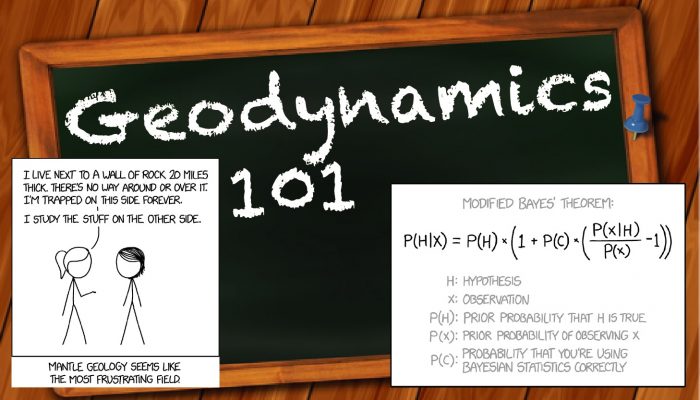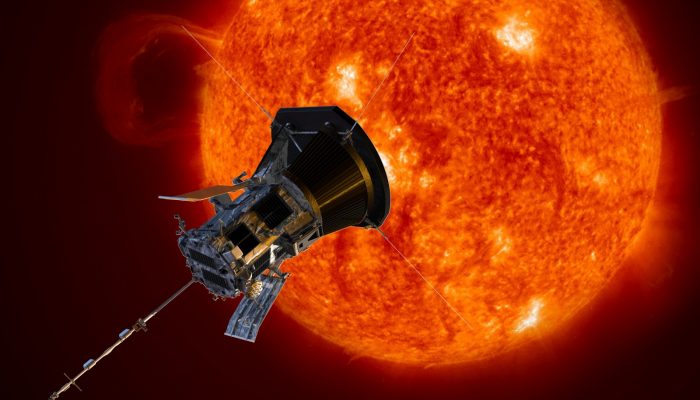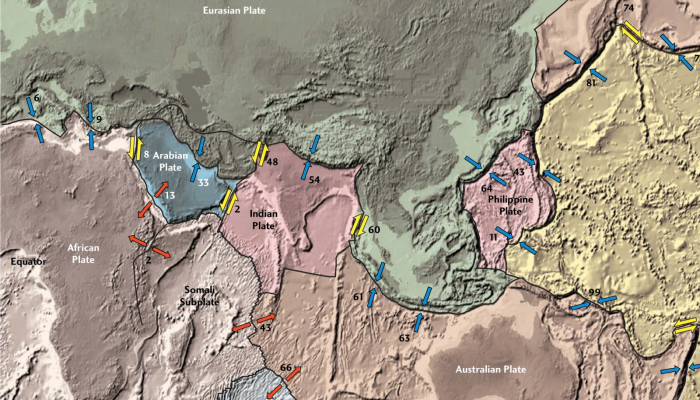Between the 10thand 14th of September 2018, the 8thInternational Brachiopod Congress took place in the prestigious venue of the University of Milan, after the previous editions held in Melbourne (Australia) in 2010 and in Nanjing (China) in 2015. It was the first time, since its foundation over 35 years ago, that this important conference was hosted in Italy. The Congress was attended by 150 parti ...[Read More]
Geodynamics
Inversion 101 to 201 – Part 2: The inverse problem and deterministic inversion
The Geodynamics 101 series serves to showcase the diversity of research topics and methods in the geodynamics community in an understandable manner. We welcome all researchers – PhD students to professors – to introduce their area of expertise in a lighthearted, entertaining manner and touch upon some of the outstanding questions and problems related to their fields. This time, Lars Gebraad, PhD s ...[Read More]
Seismology
Seismology Job Portal
On this page we regularly update open positions in Seismology. Do you have a job on offer? Contact us at ecs-sm@egu.eu _______________________________________________________________________________________ Latest open positions: PhD opportunities [1] Funded PhD opportunities in fluvial seismology at New Mexico Tech Open until: 2019-09-30 The students will join a project to in ...[Read More]
Cryospheric Sciences
Do clouds affect melting over Antarctic ice shelves?
The Antarctic Peninsula is the ‘canary in the coalmine’ of Antarctic climate change. In the last half-century it has warmed faster than most other places on Earth, and considerable change has consequently been observed in the cryosphere, with several ice shelves collapsing in part or in full. Representing this change in models is difficult because we understand comparatively little abo ...[Read More]
Solar-Terrestrial Sciences
A close-up journey to the Sun: The Parker Solar Probe Mission
Almost two months ago, in August 12, 2018 Parker Solar Probe (PSP) launched by NASA on a Delta IV Heavy rocket from Cape Canaveral, Florida. This is a long-awaited mission from the Heliospheric community. The first to explore the Sun within distances of ~0.167 AU (or 25 million kilometers) at its perihelia. Its ancestors were the successful Helios -A and -B spacecraft, a pair of probes launched in ...[Read More]
Geodynamics
Inversion 101 to 201 – Part 1: The forward problem
The Geodynamics 101 series serves to showcase the diversity of research topics and methods in the geodynamics community in an understandable manner. We welcome all researchers – PhD students to professors – to introduce their area of expertise in a lighthearted, entertaining manner and touch upon some of the outstanding questions and problems related to their fields. This time, Lars Gebraad, PhD s ...[Read More]
Tectonics and Structural Geology
Meeting Plate Tectonics – Dan McKenzie
These blogposts present interviews with outstanding scientists that bloomed and shape the theory that revolutionised Earth Sciences — Plate Tectonics. Get to know them, learn from their experience, discover the pieces of advice they share and find out where the newest challenges lie! Meeting Dan McKenzie Prof. Dan McKenzie is one of the key actors empowering the Plate Tectonic Theory. He was Profe ...[Read More]
Tectonics and Structural Geology
Meeting Plate Tectonics
The sixties brought us many moving moments: Woodstock, the civil rights movement, the moon landing… and the establishment of the plate tectonic theory. It is during the turbulent late sixties that scientists published groundbreaking manuscripts proving that pieces of the Earth’s outer layer are in a constant state of motion. In Late 1967 to mid-1968, Dan McKenzie and Robert L. Parker, Jason ...[Read More]
Natural Hazards
Volcanic eruptions: Sometimes natural spectacles, but other times disasters
In April 2018, an eruption of the Kilauea volcano in Hawaii started. The activity continued for months, with impressive lava flows that cut roads and even covered houses and entire neighbourhoods (Figure 1), forcing the evacuation of thousands of people. Fortunately, it did not take any life. Some weeks later, on June 3rd, Fuego volcano, in Guatemala, shocked the international community with a sh ...[Read More]
Cryospheric Sciences
Image of the Week – On thin [Arctic sea] ice
Perhaps the most enduring and important signal of a warming climate has been that the minimum Arctic sea ice extent, occurring each year in September, has declined precipitously. Over the last 40 years, most of the Arctic sea ice has thus been transformed to first-year ice that freezes in the winter and melts in the summer. Concern about sea ice extent and area is valid: since sea ice i ...[Read More]





![Image of the Week – On thin [Arctic sea] ice](https://blogs.egu.eu/divisions/cr/wp-content/blogs.dir/17/files/2018/10/kayak-700x400.jpg)